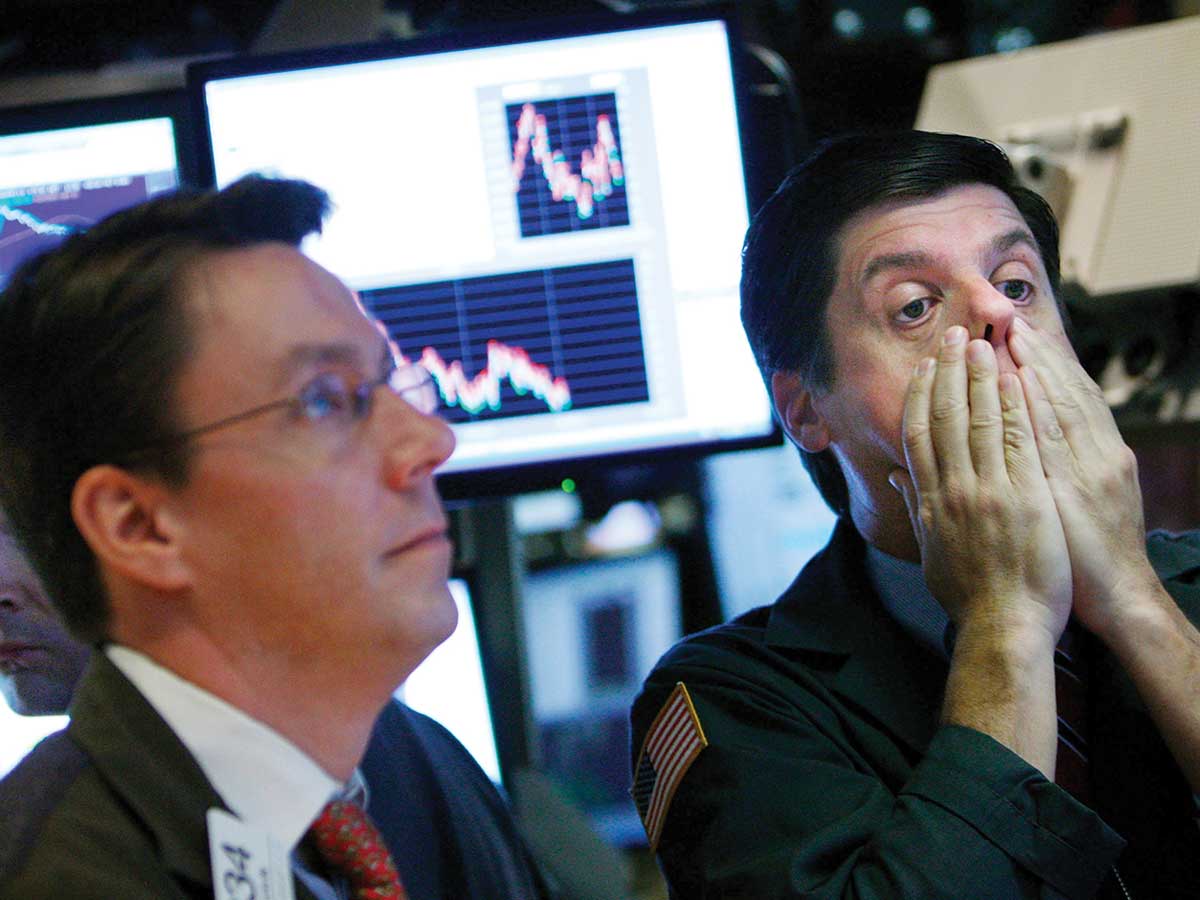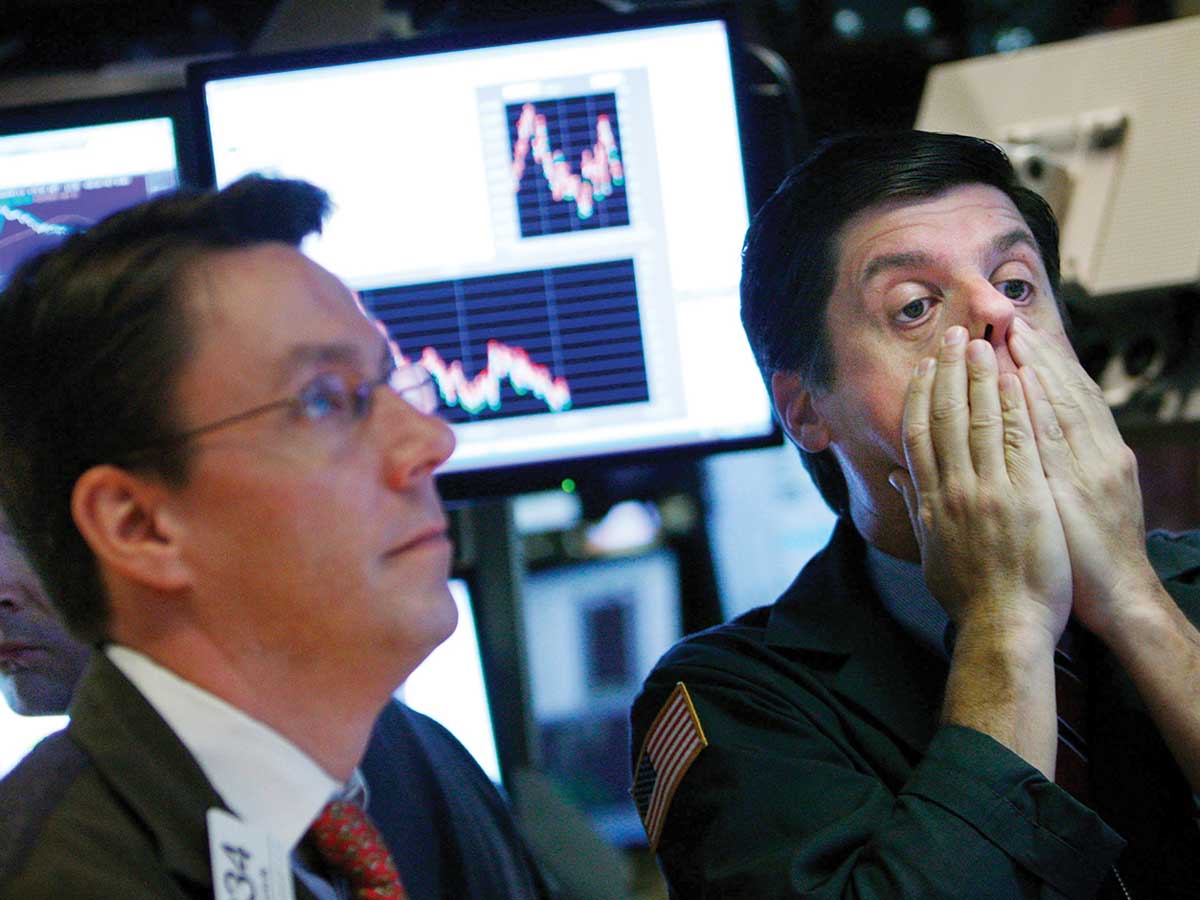
When is the next recession going to hit?
 Financial markets are rightly concerned that playing chicken with the global economy will end in a disastrous collision (Photo by Getty)
Financial markets are rightly concerned that playing chicken with the global economy will end in a disastrous collision (Photo by Getty)
It’s the economic question of the day: when is the next recession going to hit? If you’ve been following the news, the answer is, supposedly, soon. Last October, David Rosenberg, chief economist at Gluskin Sheff + Associates, pegged the probability of recession in Canada at 80 per cent in the near term, while others are more “optimistic,” putting the odds at between 50 and 70 per cent. According to an August 2019 survey by the National Association for Business Economics, 74 per cent of economists predict a recession in the U.S. within the next two years.
Is this the boy crying wolf, or is the wolf actually lurking?
The concern about a recession is predicated on a few factors. The first is the U.S.-China trade war. Until recently, free trade was a hallmark of modern economies that most people assumed would continue unabated. But political upheaval around the world has turned what were legitimate concerns into outright attacks on free trade. This has translated into a tit-for-tat increase of trade tariffs between the two largest economic superpowers in the world—an escalation that has the potential to derail global trade volumes and send global economic growth substantially lower than it already is.
74% of economists predict a recession in the U.S. within the next two years
According to the Peterson Institute for International Economics, as recently as 2017 the average tariff rate the U.S. applied to Chinese imports was just 3.1 per cent. That rate has skyrocketed to 21 per cent as of September 2019. If President Trump follows through with all of his tariff threats, the rate will rise to almost 25 per cent—and the share of goods that are subject to tariffs will have increased from 8.1 per cent in 2017 to nearly 97 per cent in 2020.
This marks a deeply concerning increase in U.S. trade protectionism reminiscent of the Smoot-Hawley Tariff Act of 1930—legislation that is often cited as a major contributor to the Great Depression, as it raised import duties at a time of already weak global growth. Financial markets are rightly concerned that playing chicken with the global economy will end in a disastrous collision.
The second piece of information that is raising fears about a recession is the fact that, in the spring of 2019, the U.S. Treasury yield curve inverted. For the uninitiated, an inverted yield curve refers to a unique outcome in government bond markets in which long-term bond yields are lower than short-term bond yields. Under normal economic conditions, the reverse is typically true—a borrower will usually need to pay a higher interest rate to an investor to compensate for: 1) the likelihood that interest rates will be higher in the future than they are now; 2) the additional uncertainty and inflation that comes with holding a longer-term security; and 3) the opportunity cost of locking in one’s money for a longer period of time (the latter two are collectively referred to as the “term premium”). These are costs that investors need to be compensated for, so yield curves typically have an upward slope.
A downward slope means that the investor is willing to accept a lower interest rate on a longer-term bond than a shorter one, despite all of these costs. And the only economic circumstance in which that makes sense is if expectations are for interest rates to drop dramatically in the future. In other words, bond investors are expecting significant interest rate cuts from central banks in order to combat economic weakness—that is, recession.
Economists have long used the shape of the yield curve to predict future economic conditions. An inverted yield curve is the most accurate indicator available, preceding almost every recession we have good data for going back to the 1970s. On May 25, 2019, the 10-year treasury yield fell below the three-month yield for the first time since 2007, just prior to our last recession. In Canada, the spread between the two went negative on May 13.
It doesn’t help that here in Canada, we have our own vulnerabilities to worry about: household debt, housing affordability and low oil prices, to name a few. Throw all of that in a blender and it’s not surprising that economists are pegging the odds of recession as high as they are.
And yet, there is reason to be skeptical that a recession is right around the corner. Consider the trade risk. Prior to the last few years, a trade shock wasn’t anywhere on the radar of risks that we ought to be concerned about. It’s only there now because world leaders put it there. This is a fabricated risk, more politics than economics. Just as easily as it was put on the radar, it can be taken off; tariffs signed by executive order can be un-ordered. If President Trump succeeds in signing a trade deal with China, then suddenly trade as a risk to the outlook might be in the rearview mirror.
Considering the inversion of the yield curve occurred around a time of weakening economic growth but also an escalation of trade tensions, it’s likely that the inversion could resolve itself should those tensions ease. But even if we consider the possibility that the two are mutually exclusive, there’s reason to be cautious. Yield-curve inversions tell us little about the timing of a recession. Prior to the 1980 recession, the yield curve inverted on Jan. 2, 1979—a full year before the recession began. Before the 2008 financial crisis, the yield curve inverted in August 2006.
In addition, there is at least some reason to believe that international bond markets, particularly those in Europe, are skewing our perception of yield curves as an indicator of recession. This is due to the fact that both short- and long-term interest rates in many major European countries have become increasingly negative. European governments are now literally being paid to borrow money. In total, the market size of negative yielding debt—most of which is in Europe and Asia—had already hit US$17 trillion in August. It would not be hard to believe that investors looking for even a little bit of positive return would look to North America and that international capital flows are keeping longer-term bond yields here more depressed than they otherwise would be. In other words, there are a lot of unprecedented things going on in bond markets, and the inversion—while still a strong indicator of a coming economic storm—may not be as significant as it once was.
There can be no doubt that a recession is looming somewhere on the horizon. We are 10 years out from the last recession, the typical amount of time that passes before the next one hits. But predicting the timing is incredibly difficult—it could be six months or five years from now. So where does that leave us? If a shepherd starts crying wolf, it wouldn’t hurt to get the axe ready. But we might be waiting a little while before the beast actually shows.